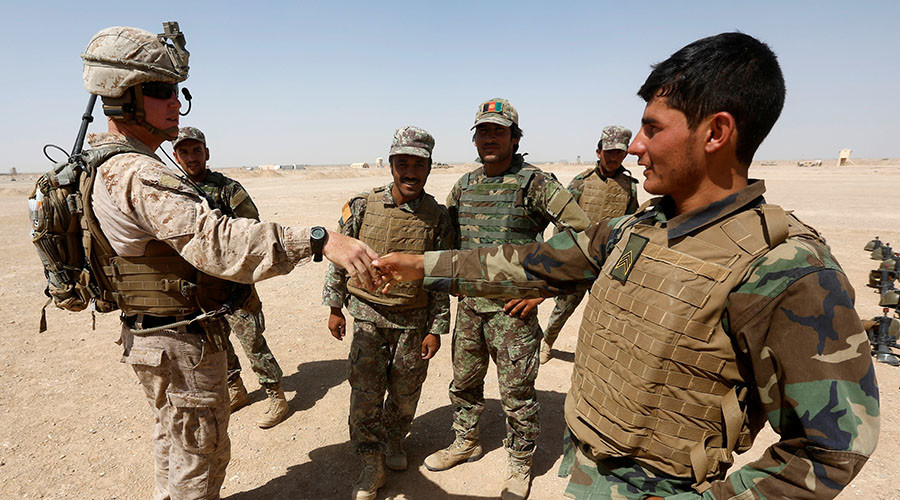‘US designed a force unable to provide national security’: Report slams American training of Afghans

The Pentagon has spent billions outfitting Afghan forces without giving them proper training, failing to understand the full “complexities and scale of the mission,” a government watchdog said, also pointing out other flaws in US strategy.
The Special Inspector General for Afghanistan Reconstruction (SIGAR) issued a critical report on Thursday, titled “Reconstructing the Afghan National Defense and Security Forces: Lessons From the US Experience in Afghanistan.”
SIGAR found the US government ill-prepared to help Afghanistan in building proper security forces that could protect the country from “internal and external threats and prevent the country from becoming a terrorist safe haven.”
One of the key problems outlined in the report was that Afghan soldiers, while being handed advanced weaponry, were poorly trained. The US and NATO instructors sent to Afghanistan were themselves undertrained and undermanned, with the NATO training mission for ANDSF missing at least 50 percent of its staff.
Over 100,000 Afghan police were trained by US Army pilots, infantry officers, and civilian contractors, despite these clear concerns about the competency of the instructors.
“One US officer watched TV shows like ‘Cops’ and ‘NCIS’ to learn what he should teach. In eastern Afghanistan, we met a US Army helicopter pilot assigned to teach policing,” the report said.
“Providing advanced Western weapons and management systems to a largely illiterate and uneducated force without appropriate training and institutional infrastructure created long-term dependencies, required increased US fiscal support, and extended sustainability timelines,” SIGAR noted.
“Ultimately, the United States designed a force that was not able to provide nationwide security, especially as that force faced a larger threat than anticipated after the drawdown of coalition military forces,”SIGAR’s inspector general John Sopko concluded in the report’s executive summary.
SIGAR made twelve key findings regarding the US experience developing the Afghan National Defense and Security Forces (ANDSF). The poor capabilities of the ANDSF were just one of the subjects. Among other failures listed was the fact that US authorities had no initial plans to construct any security institutions. The establishment of the national army and police was “ultimately undermined” by “partnerships with independent militias,” the report said.
“Police development was treated as a secondary mission for the US government, despite the critical role the Afghan National Police played in implementing rule of law and providing local-level security nationwide,” SIGAR said.
While overestimating ANDSF capabilities, Washington “underestimated the resilience of the Afghan insurgency” what led the Taliban making a comeback after most American combat troops left the country.
The United Nations reported that more than 5,500 security-related incidents occurred in the country from June 15-August 31, increasing by 3 percent compared with the same period in 2016. The first eight months of the year resulted in more than 16,290 security-related incidents, according to the UN estimates.
In September, President Donald Trump’s administration decided to send 3,500 additional US troops to fight in Afghanistan, which stands as the longest running war in US history. More than 2,200 American soldiers have died in the war, which began as a response to Afghanistan’s harboring of Al-Qaeda after the 9/11 terrorist attacks in 2001. The conflict later morphed into a fight against the local Taliban to prevent them from regaining power.
Afghan civilians have fallen victims of the continuing war, with some 1,662 killed and 3,581 injured in the first half of 2017 alone, according to a mid-year report by UN Assistance Mission in Afghanistan (UNAMA




0 Comments:
Post a Comment
Subscribe to Post Comments [Atom]
<< Home